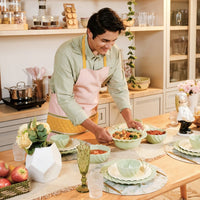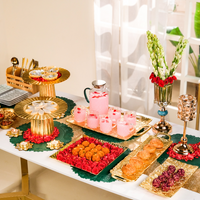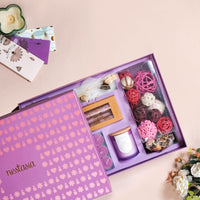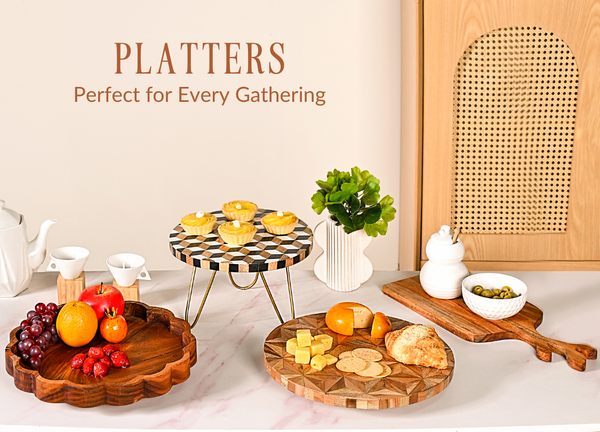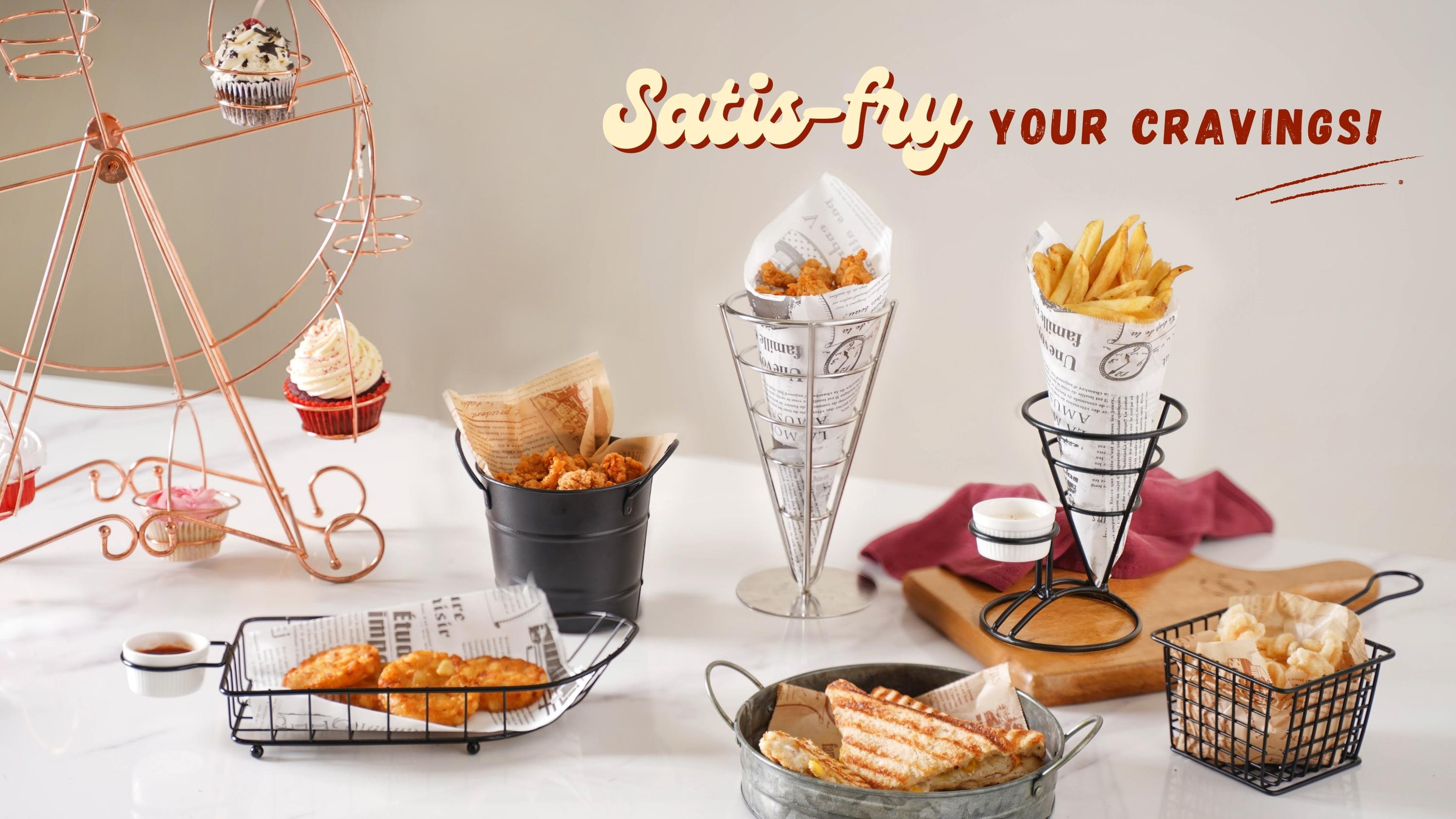
French Fries: A recompense from the gods bestowed upon us ages ago for pretending to adore zucchini. You don't need to double-check that; it's 100% historically correct (or is it).
Ever met a French fry you didn’t like? No? Well, of course not. They just make everything better. They're always delicious, quick to prepare, and come with a number of dipping options. They can be moderate to fiery, spicy or garlic-y and light depending on how you prepare them. The love for potatoes and various other veggies that can be turned into fritters is relentless.

But what exactly is the origin story of this universally loved snack? Are French Fries truly French or is there a connection with the land of the Red Devils?
Well, as it turns out, the exact origin of the deep-fried potato fingerlings is a mystery by itself, while there are many stories, legends and claims, there are a few that standout, particularly the Belgian Claim, the French Claim and the Thomas Jefferson narrative.

The Belgian Claim
The Belgian Claim suggests that *drumrolls* the French fries are not actually French *gasp*. Despite their name and popularity, it is believed to be a ‘geographical misnomer’.
According to National Geography, the origins can be traced back to Belgium in the late 1600s, when historians assert that potatoes were being fried.

Poor villagers in the Meuse Valley, according to lore, would frequently eat little fried fish caught in the river. When the river froze in the winter and fishing proved to be impossible, they figured that farm-to-table made more sense than ice-to-table. Thus, forcing the inhabitants to seek alternative sources of food.
The villagers then turned to everyone’s favorite root plant, potatoes; slicing and frying them in the same way they did fish.

According to legend, American soldiers first encountered the fries when stationed in Belgium during World War I, and because the dominant language in southern Belgium is French, the delectable potatoes were dubbed "French" fries.
The Belgians aren't about to give up their claim anytime soon. According to the BBC, Belgium has filed a petition with the UN Educational, Scientific, and Cultural Organization to "endorse the fry as an official icon of Belgian cultural heritage."

The French Claim
If you listen closely you can almost hear a French man say “Les frites ne viennent pas de Belgique”.
Of course, the French have something to say about that origin tale.
According to the French, Antoine-Augustine Parmentier, an army surgeon, was taken by the Prussians during the Seven Years' War (1756-1763). He was fed potatoes as part of his diet while he sat out the war in Prussia.

Those days in France, potatoes were only appropriate for pigs. The government had outlawed spuds for human eating in 1748 due to popular fear that they induced leprosy.
Antoine discovered potatoes to be remarkably nourishing during his confinement. He was completely clear of leprosy symptoms when he returned to France after the end of the war. He began pushing potatoes as a healthy meal, and the Paris Faculty of Medicine declared the pomme de terre safe to eat in 1771.
The now-popular potato was soon being served as french fry-like snacks by street vendors on Paris’s Pont Neuf in the 1780s. But it's unclear who initially came up with the notion of deep-frying potato fingerlings.

Thomas Jefferson Narrative
An alternative story claims that after serving as the United States' ambassador to France from 1785 to 1789, Thomas Jefferson - often dubbed as the first American foodie - brought the delicacy back to the United States. This happened around the same time he had James Heming - brother of the famous Sally- , trained as a chef during his stint as American Minister in France.

How do you like your fries?
We can’t possibly talk about France and fried potatoes and not talk about the slightly more elevated dish than french fries and it has to be the puffy delight that is Pommes Soufflées.
If you want to try something new with potatoes, pommes soufflées are ideal. These airy puffed potato pillows have a delicious texture and go well with a variety of cuisines.

Now close your eyes and imagine; slices of potatoes being fried twice, while frying it for the second time the potato slices are puffing up into little balloons and turning golden brown. Are you drooling yet?
If not, then let's just move across the border from France to Spain. Now, while many countries claim their own variations of fries, from Dutch and Belgian frietjes to American hash browns, how can we ignore Spain? Of course, it has its own distinctive dish that is never missing from the menu at any tapas bar.

It’s one of Spain's most popular tapas of course, the Patatas Brava. With a round of cañas, they're the go-to appetizer or snack.
Why, you ask?
The explanation is fairly simple: nothing beats a platter of deep-fried potatoes topped with a scrumptious sauce, especially when there's alcohol involved.

There are two main elements in Spanish patatas bravas: the potatoes and the sauce.
The potatoes are cut into bite-size chunks and deep fried in olive oil. The main thing that sets them apart from other varieties of what Americans know as “fries” is the shape. They resemble home fries rather than French fries in this regard. Before serving, the sauce is typically drizzled over the potatoes. The vivid red and slightly spicy bravas sauce explains its name: brava generally translates to "strong" or "brave."

Fried potatoes are one of those dishes that transcends national and cultural barriers.
Irrespective of who the palatable delicacy belongs to, it is safe to say it has traveled the globe more than I did. The fried potato has made its way around the world's culinary landscape and is a global universe, but the way we consume them isn’t.
While Americans love ketchup on their fries, the French prefer mustard, and the British prefer vinegar. But try asking anyone in Japan to have ketchup with fries without having chopsticks hurled at you since they prefer to eat their fries with green curry or soy sauce. Malaysians eat theirs with chilli sauce, whereas Canadians eat theirs as poutine with gravy and cheese curds. If you order a chicken salad in Pennsylvania, it comes with French fries and melted cheese on top, how's that for inclusivity!

Then there are the likes of cajun fried potato and truffle fries. While the origin of these mouth-watering dishes are widespread and adapted differently in different parts of the world, there is no denying the heartiness of these dishes.
The cajun fried potato is a creamy and tasty appetizer made with mashed potatoes with creamy mayonnaise sauce and is essentially an extension to the popular meat-based cajun recipe for the non-meat eaters.
Truffle fries are generally thin cut deep-fried potatoes topped with truffle oil and sometimes fresh herbs and spices, garlic, cheese, or other toppings.

An Indian twist!
If variety is what you are seeking then no need to catch an international flight. India has its own inherent spread of potato based fries.
From Kashmir to Kanyakumari, whether it’s aloo bhaja or peri-peri, India’s vast diversity shows even in it’s fritters.
Take the Sindhi Aloo tuk for example, the potato slices that are crispy, fried, and seasoned. This isn't your average bag of potato chips. The potatoes are fried twice and then seasoned with powerful spices, giving them a wonderfully crispy texture. The result is crunchy, tangy, salty, and spicy potato slices that are great as a side dish or snack.

The famous jhuri aloo bhaja is close to every Bengali’s heart. Crispy, fried grated potato or juliennes—served alongside some steaming rice, hot dal, and a wedge of lemon. This quintessential delicacy is a classic Bengali side dish that is adored throughout the country for its unusual texture and crunch. It is usually served during weddings and other occasions.

Fries don’t discriminate, they come in all shapes and sizes, from wedges, curlies and crinkle to tornado, waffles, tater tots, smilies and shoe string. If you’re planning to make these at home then we can help a little. Use the crinkle potato cutter to cut potatoes for french fries with a lovely rippling wave pattern to get crinkle fries. The veggie slicer can be used to cut thin and uniform slices of potato to make chips or small shoestring fries.

Arby’s curly fries is two continents away but worry not you can make them at home with the sharp and sturdy knife set. After you've skewered the potato, carefully carve spirals with a knife while rotating the potato. The nicest spirals are those that are sliced evenly, but does it really matter if the fries taste good?

If the street favorite tornado fries is what your heart wants then no need to step-out or buy an expensive machine, just use the veggie slicer. Wondering how?
Check out the video below and try it at home:
But deep-frying and peeling so many potatoes at home can get very tough, use a sturdy pair of tongs for frying and a sharp peeler for peeling the potatoes.

Why just show potatoes all the love?
While potatoes and its various other abbreviations are universally loved there are a multitude of other vegetables and edibles that are often eaten as fritters.
Take for example sweet potato, zucchini, carrots, eggs, chicken or onion ring. While the rest of the world is adapting to the zero-waste lifestyle, Indians have been practicing it for decades.
Bengali cuisine makes extensive use of the heron flower. In West Bengal, the blossom is known as bok phool, and it is widely eaten by dipping it in batter and frying it.

The flowers and leaves are high in vitamins and minerals, and are said to have anti-inflammatory, analgesic, and antipyretic properties.

Similarly, pumpkin flower is also popular in Bengali cuisine. Fritters or pakoda are made using it. Kumro phooler bora, also known as Pumpkin Flower Pakoda, is a classic Bengali dish that is best served with green chutney.

The Bengali cuisine has batter fried eggplants as well that are colloquially known as beguni. Beguni is usually eaten as a snack with puffed rice. The banana flower is another commonly used vegetable for making fritters known as mochar chop. The banana flower, also known as mocha, is cleaned and finely chopped after which it is crumb-fried and eaten with a mustard dip.

Moving down south, idli fries made with leftover idlis are immensely popular. The leftover idlis are cut into wedges or fingers and then deep fried. Later red chilli powder, chaat masala, pav bhaji masala or idli podi is sprinkled on top of it.

The well known and easy to make Kerala banana chips is yet another delicious addition to fritter from the Indian subcontinent. The banana is thinly sliced and simply deep-fried. Chilli powder or chat masala is added to season the chip.

Serve it up!
If you’ve read this far then you might wanna continue since this is what REALLY matters, the part for which so much has been written and read - Eating!
Now that the couch potato in you knows how fries came into being, the different ways people eat it around the globe and how to fry not just potatoes but more, it’s time to know the creative and accessible ways of serving the one thing that puts every diet plan down the drain- fried food.

One of the most typical ways of serving fries is in a basket. However, there are other ways that are more interesting and creative.
The conical fry stand is a great way to serve fries when they are hot. The finger food basket provides protection from the heat and also makes it easier for you to eat them without making a mess. But when friends come over, serving in one stand might be a task, for times like these try using a conical fry stand with four baskets to serve fries.

Eating fries at home American-diner style has never been easier. The snack basket is an excellent way to serve fries with other snacks so that people can have more variety when they eat. Experiment with different kinds of snack baskets and colors like rose gold and black.
An alternative of baskets is a chic snack bucket just like the ones in your favorite restro-bar. The bucket can be used to serve mozzarella sticks or chicken nuggets. Imagine munching on a bucket full of chicken nuggets and watching your favorite show. You can also serve Indian fritters like beguni, kumro phooler bora or sindhi aloo tuk in the bucket.

Have you thought of serving your fries, idli fries or bok phooler bora in a basket that can also fit in your dips? If not, then now’s the time, the food basket with dip bowls is the most convenient way of serving fries that need dips. It also makes cleanup easier since you’re using only one utensil.
Instead of using a basket or plate to serve onion rings try using a stand. The onion ring stand with cavities to hold dip bowls provides a visually appealing display for crispy onion rings to be stacked on the coffee table alongside hot or cold beverages.

If you’re planning a fun party and don’t just want to stack your finger foods then use some uniquely shaped baskets for serving. For example, use the boat shaped snack basket or the tray basket to add just the right touch of quirk to the party. The mini cart and cart shaped baskets can be used for a single serving of snacks at small get-togethers.
Although fries and ketchup go hand-in-hand like Bonnie and Clyde, you might wanna jazz it up sometimes. Check out our recipes for healthy, spicy and sweet dips:
There are so many variations and ways of making fritters that a single blog isn’t enough. From baking and batter-frying to deep frying and air frying, the list is endless. It is the same with preparing and serving them.
No matter the kind of preparation or from which continent it comes, a good ol’ plate of classic fried potato is the tastiest accompaniment to any meal.


